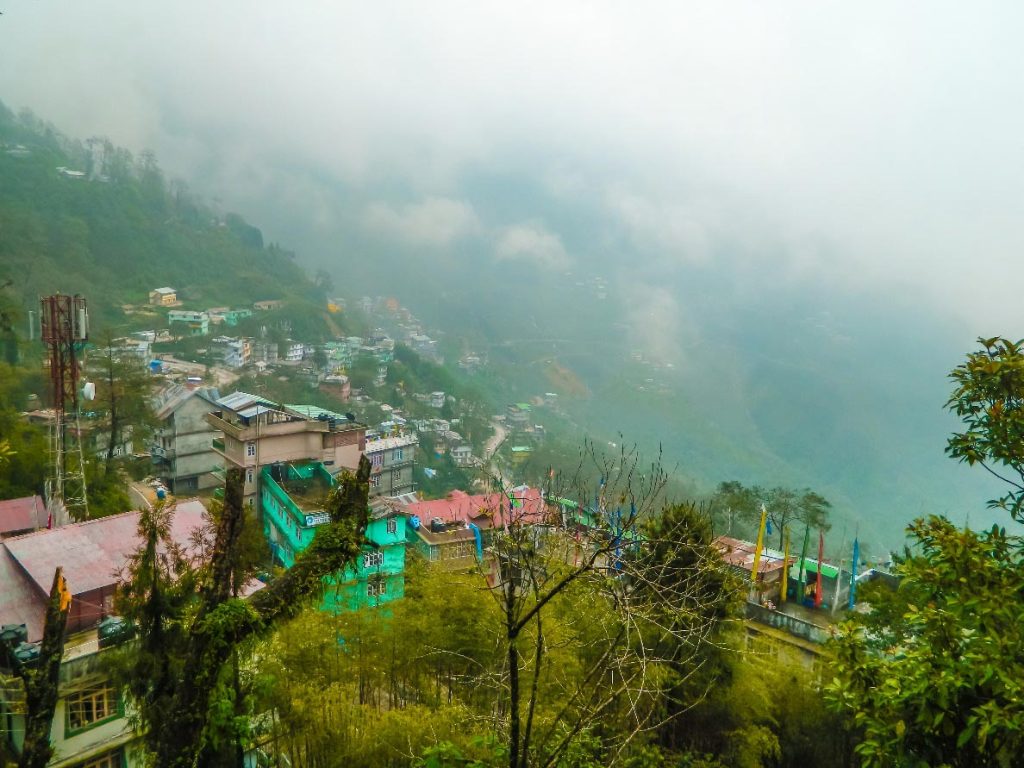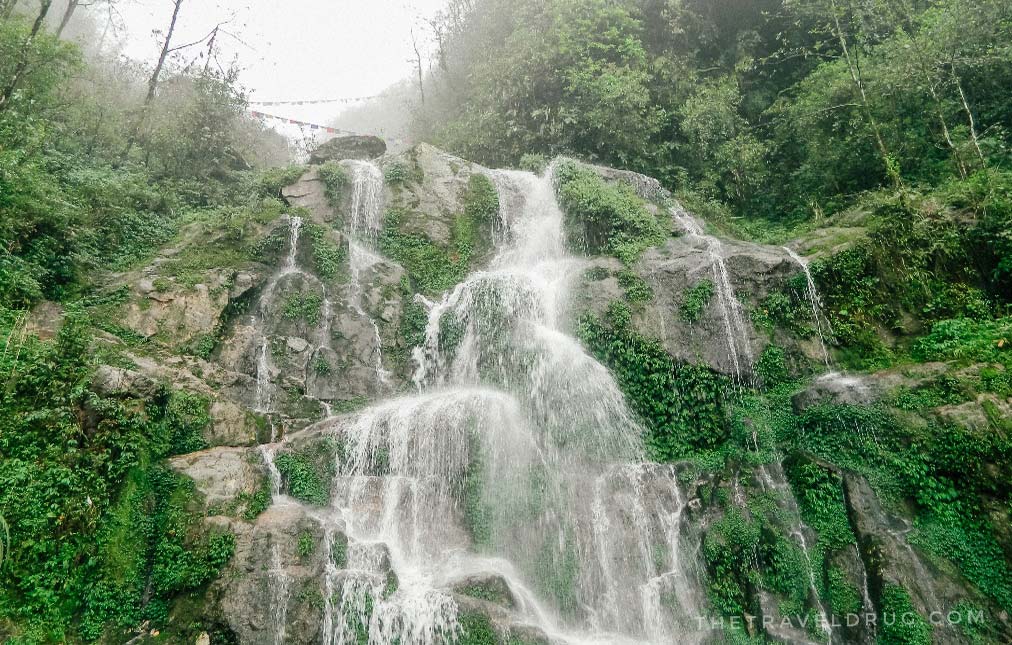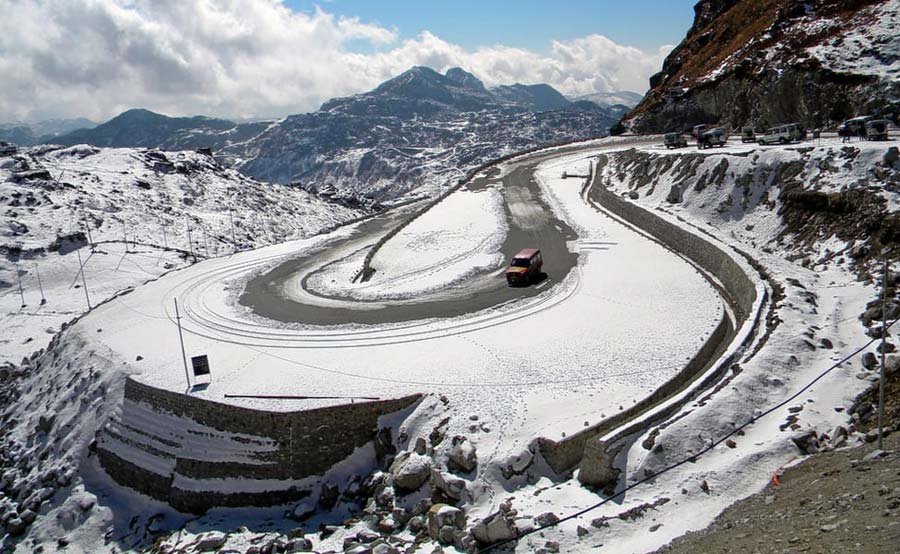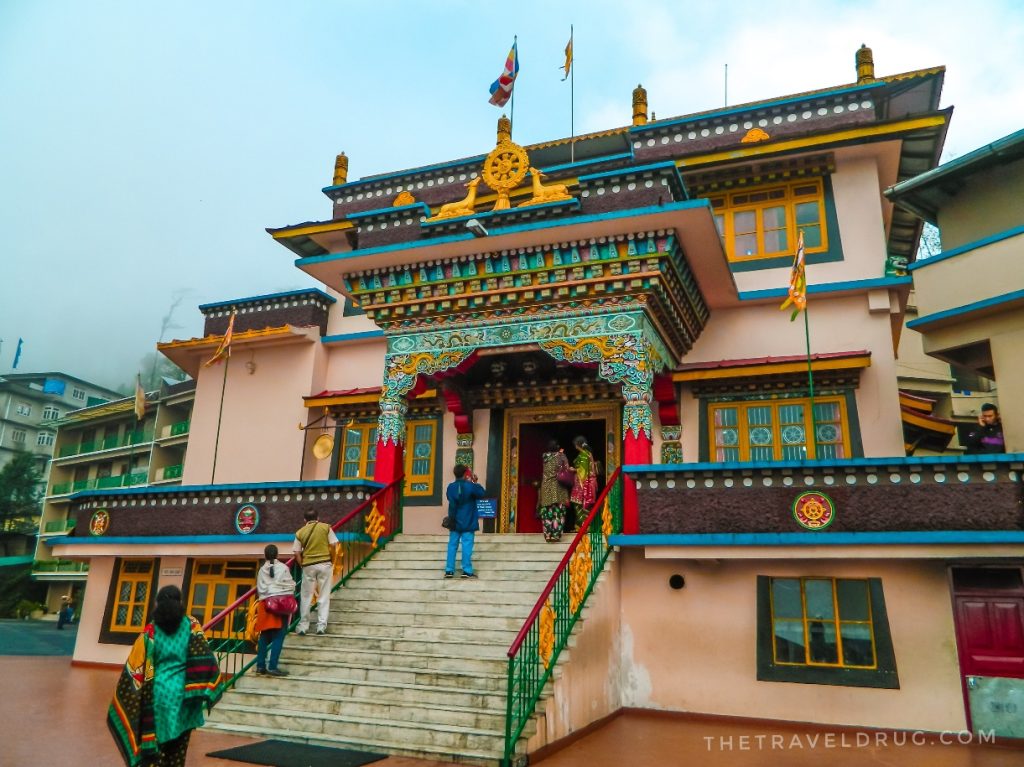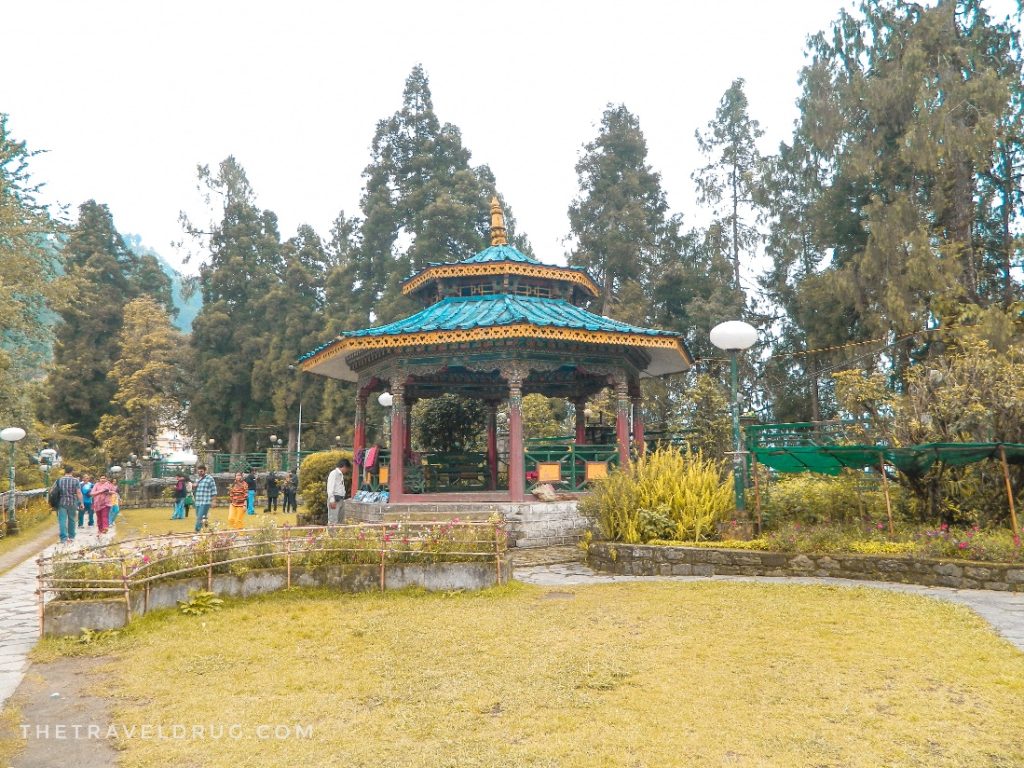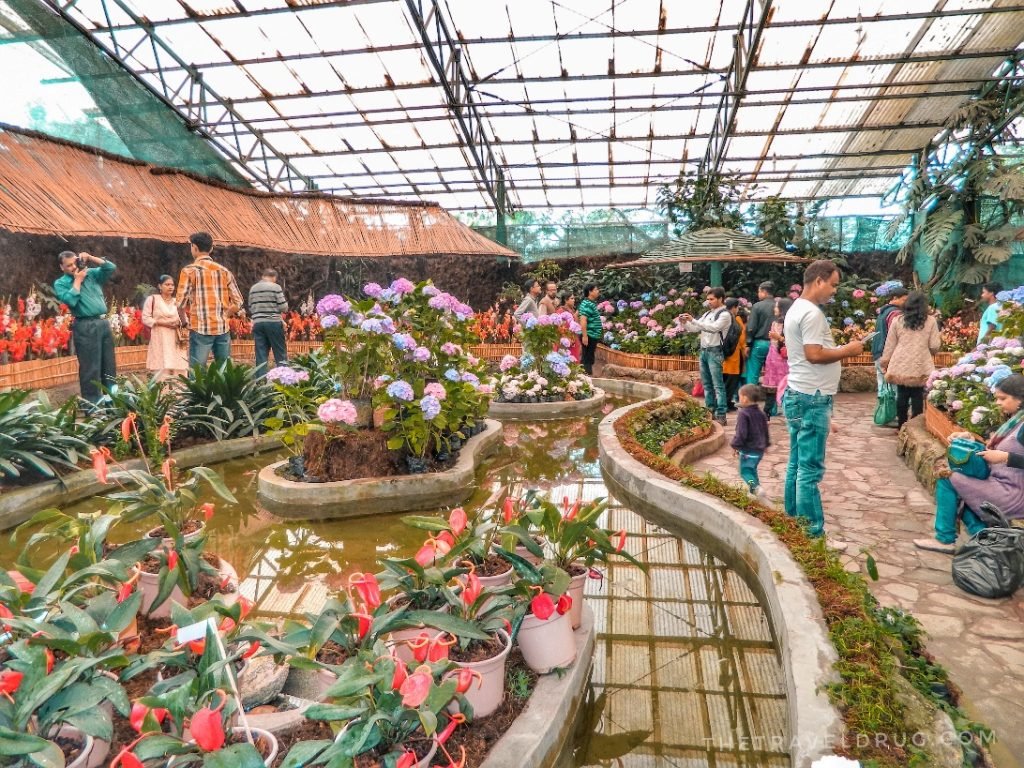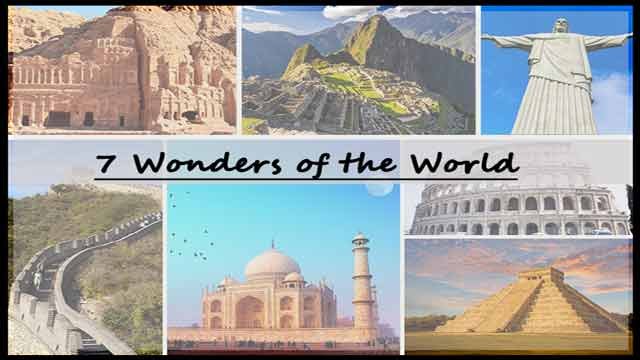
Two Days in GANGTOK – Travel Diary of an Architect
An Architect’s Travel Diary for 2 days in GANGTOK
North-East India is one of the beautiful yet mysterious places to visit. Sikkim is one such part of north-east India perfect for an unwinding experience.
Gangtok, the largest town of Sikkim is known for its serene beauty. It offers amazing historic places, wildlife sanctuary, parks, lakes and waterfalls. Located at a higher altitude, you can enjoy colder and pleasant climate along with majestic views of mountains and valleys.
In today’s post, I will be sharing my travel diary from our visit to Gangtok.
 CONTENTS OF THIS POST:
CONTENTS OF THIS POST:
- About Gangtok
- How to reach Gangtok
- Best time to visit Gangtok
- Where to stay in Gangtok
- Our Journey to Gangtok
- Places visited in Day One in Gangtok
- Places visited in Day Two in Gangtok
ABOUT GANGTOK
Gangtok is an eminent Buddhist pilgrimage center in India as well as an ideal hill station that offers leisure travel opportunities including some high-altitude lakes, mountain passes and is well connected to other hill stations and major cities across India.
It is known for its rich flora, its beautiful natural setting, warm people, the serene Buddhist monasteries and is perfect for anyone in search of a tranquil travel experience away from the humdrum of city life.
Indian Nepalis, Lepchas, and Bhutias are the major population in the city, and Nepalese, Hindi and English are the major spoken languages here. Gangtok offers a pleasant weather throughout the year. Gangtok also is known for its vibrant local cuisine choices like Momos, Thukpa, Chowmein, Thanthuk, Wanton, Fakthu amongst others.
 HOW TO REACH GANGTOK
HOW TO REACH GANGTOK
The only possible way to reach Gangtok by road is from Bagdogra, which the closest airport is located at the distance of 125kms approximately. Bagdogra Airport is connected with almost all major Indian cities from Mumbai, Delhi, Bangalore and others. One can easily get cabs or buses from the airport taking you to Gangtok.
If one is planning to reach Gangtok by train, there are limited options as New Jabalpuri is the closet railway station. It takes 3 to 4 hours by road to reach Gangtok from New Jabalpuri. It is an important railway station connecting the North Eastern State to the rest of India.
If you are opting for a drive from Darjeeling to Gangtok, is a distance of 110 kms approximately and you’ll be driving through Jorethang, Manput and Rangpo.
BEST TIME TO VISIT GANGTOK
Gangtok offers a pleasant weather throughout the year. October to February are the colder months, January said to be the coldest. The ideal time to visit Gangtok is between March till end of May as you can enjoy the pleasant weather and can experience the summer blooms of various flowers.
WHERE TO STAY IN GANGTOK
M.G. Road is said to be one of the best locations to stay in Gangtok, as it is a central location. All amenities right from taxi, buses, shopping and restaurants are easily available in M.G. Road. One can also opt for areas beyond M.G. Road for budget friendly stay options.
OUR JOURNEY:
Our journey began from Mumbai, our first flight was to Kolkata, and our second flight was from Kolkata to Bagdogra. Due to delayed flights we landed in Bagdogra late in the evening.
Reaching Gangtok from Bagdogra was a pretty exhausting ride for us. We rode through difficult and diverse terrain in the dark. Around 9 pm, we reached our hotel in Gangtok and spent rest of the night resting and getting settled down in our room.
DAY 01 IN GANGTOK
We woke up to a cold morning, despite of being the last week of May. After layering up and enjoying a hearty breakfast at our hotel, we left to explore Gangtok. Our accommodation in Gangtok was at Hotel Heruka. It was just off the main street and we could enjoy beautiful view of the valley.
We had kept the major landmarks in Gangtok on the first day and also they fall on the same route. We were visiting Baba Harbhajan Singh Temple, Tsomgo Lake and Nathula Pass, all fall in the eastern part of Sikkim. The ride is a long and strenuous one, and it gets very cold and windy so make sure you carry all necessary warm wear.
Driving through the picturesque mountains, we could see the quaint little villages in the valley. We took a small halt for some hot tea and snacks at a local shop. The air up her is very fresh and clean.
BABA MANDIR/ BABA HARBHAJAN SINGH TEMPLE:
This is a temple dedicated to “Baba” Harbhajan Singh, who was a brave soldier of the Indian Army, who died near the Nathula Pass in eastern Sikkim, India. The temple is located at a distance of around 60 km from the Gangtok city.
There are two shrines built to show reverence to Baba Harbhajan Singh. The oldest shrine has been built at the site of the bunker, where Baba Harbhajan was posted during his tenure in the Indian Army. The new one has been built at close proximity from Changu Lake and is more accessible to locals and tourists. We were in shivers the whole time as the climate up here is extremely harsh and cold.
MANDAKINI WATERFALLS
While returning down from Baba Mandir, there’s another spot i.e. a huge waterfall. It was quite difficult to photograph because of the heavy fog. The view from this height was breathtakingly beautiful with snow-capped mountains, fog rising up from the freezing blue water-bodies and a sense of calmness amongst this all.
TSANGO LAKE
Our next stop was Tsomgo lake, which is popularly also called as Changu Lake. Changu literally means “the source of the lake” in Bhutia language. The lake is at a distance of 40 Km from Gangtok city. Tourists have to take a special permit pass from Tourism and Civil Aviation Department of Sikkim to visit it.
Being situated at an altitude of 3,780 metres, this serene lake derives its turquoise waters from the melting snows of the surrounding mountains. The lake remains frozen in the winters and is a beholding sight and is known to be home to the Brahminy ducks.
Associated with many other myths and legends, the Sikkimese consider the lake as sacred. It is believed that in olden times, Buddhist monks would study the colour of its water to forecast the future.
One can enjoy rides on colorfully decorated yak’s and mules at the lake site, which also has a variety of eating stalls serving snacks and beverages. Snow boots and gumboots can be hired here. Rented traditional costumes of the region are also available through local vendors.
NATHULA PASS
One of the must-visit places in Gangtok, the Nathula Pass is an important pass on India-China border crossroads and was a part of the ancient Silk Route. It once catered to traders and merchants traveling through the Silk Route.
It is located an altitude of 4310 metres and is located 54km east of Gangtok. One can only reach here from Gangtok. Nathula plays a very important role in the Sino-Indian trade, as it is one of the three open trading borders between India and China. Apart from strengthening the economy and improving border relations with China, it also shortens the distance between major Hindu and Buddhist pilgrimage sites.
Source: https://tinyurl.com/y5t3cae7
Things to remember about Nathula Pass:
- Only Indian nationals who has a valid permit can visit the Nathula Pass. You can get a permit by applying to the Tourism and Civil Aviation Department. A registered tourist agency would help you get the permit as they are well versed with the process.
- Don’t forget to carry your photo ID proof and 2 or more passport size photographs for the permit. The permit cost for Nathula Pass is Rs.200/- per person.
- Due to thin air level and high-altitude oxygen levels, children below 5 years of age are not permitted.
- Nathula Pass visiting days: Wednesday – Sunday
- Best season to visit the Nathula Pass is Autumn (October – November) and Summer (April – mid-June).
After returning to Gangtok in the evening, we took a stroll exploring the streets near our hotel and concluding our day.
DAY 2 IN GANGTOK
Our second day in Gangtok involved a diverse mix of locations and landmarks in central Gangtok.
BAKTHANG WATERFALLS
Bakthang Waterfalls are situated at on the North Sikkim Highway in Gangtok. This small waterfall is situated near the Tashi View Point and 5km from Gangtok Bus Station. Among the popular waterfalls in Gangtok, it also offers rope sliding for adventure lovers, and one can get a bird’s eye view of the region.
Visitor Timings: 10am – 4 pm.
GONJANG MONASTRY
You must not ignore the spiritual side of Gangtok, and definitely visit some of its many peaceful and serene monasteries. There are more than two hundred monasteries in Sikkim for one to explore on further.
We visited the Gonjang Monastry, another of Gangtok’s noteworthy sites and is located near Tashi View Point.
Established by H.E. Tingkye Gonjang Rimpoche, who was the Nyingmapa Terton of the 15th century, the monastery was blessed by Dalai Lama in 1981.
You can explore the garden, learn about historic artefacts here. The monastery is located on a height and give some gorgeous panoramic views of the valley from here. The vibrant and intricately decorated monastery is a treat to the eyes. You will get to see the marvellous giant Buddha and many other sculptures inside and around the monastery.
Website: http://www.sikkimeccl.gov.in/History/Monasteries/East/TinkyeGonjang.aspx
Other Monastries In Gangtok:
Following are some other must visit monasteries in Gangtok:
- Enchey Monastry: Located on a hilltop and known to be one of Gangtok’s most prominent monastery. It is named after the word which means “solitary temple”. You can get spectacular views of the majestic Kanchenjunga from here. Opening hours: 8am- 6pm.
Website: http://www.sikkimeccl.gov.in/History/Monasteries/East/EncheyMonastery.aspx
- Ranka Monastry: This magnificent monastery spans over an extensive area and is one of the prestigious monasteries of East Sikkim. It offers an incredible collection of Tibetan paintings known as ‘ Thangkas’ and the gigantic gold-plated statue of Buddha present within the sanctum. Opening hours: 9am- 6pm.
- Rumtek Monastry: It was formerly known as the Dharma Chakra Center, the Rumtek Monastry is nestled on a beautiful hilltop. Known for its magnificent shrine,a golden stupa, lots of old well-preserved structures dating 16th Karmapa, along with picturesque views of the mountains. Opening hours: 10am – 2pm.
Website: http://www.rumtek.org/index.php?lang=en
GANESH TOK
The next destination we visited in the Lord Ganesha Temple, know as Ganesh Tok. It is located at an altitude of 6,500 ft. and close to the Tashi View point.
Tourists here come here not only to offer their prayers but also to soak in the amazing views from the viewing area and the circular balcony.
The temple also houses a small souvenir shop where you can get a good assortment of beautiful local souvenirs.



THE RIDGE PARK AND FLOWER EXHIBITION CENTER
The next destination we visited was the delightful Flower Exhibition Center near the Ridge Road, which is around 20 minutes’ walk from the MG Marg Main Market.
The park has various beautiful flowering plants as well as a Sikkimese style gazebo for visitors to rest and enjoy. Near the Ridge Park, the Flower Exhibition Centre which holds the annual Orchid Show.
The best to visit is between April and June to enjoy the diverse variety of orchids and other flowers in full bloom. The whole exhibition centre is a nice reprise from the outdoors and for flora lovers it’s a must-visit.
MALL ROAD – GANGTOK
Our evening was spent walking and shopping around the Mall Road. Mall Road is a place brimming with quaint yet colourful shops offering a wide array of local products and souvenir options.
There are many eateries and food joints here for you to enjoy a meal or two. The architecture and the urban scene here are very vibrant and treat to the eyes.
Shopping in Gangtok
One amazing thing of travels is the new and interesting pieces one can get on the journey. Following are some things Gangtok is well-known for:
- Tibetian carpets
- Semi-precious stones and silver jewellery
- Sikkim tea
- Thangkas
- Buddhist figures
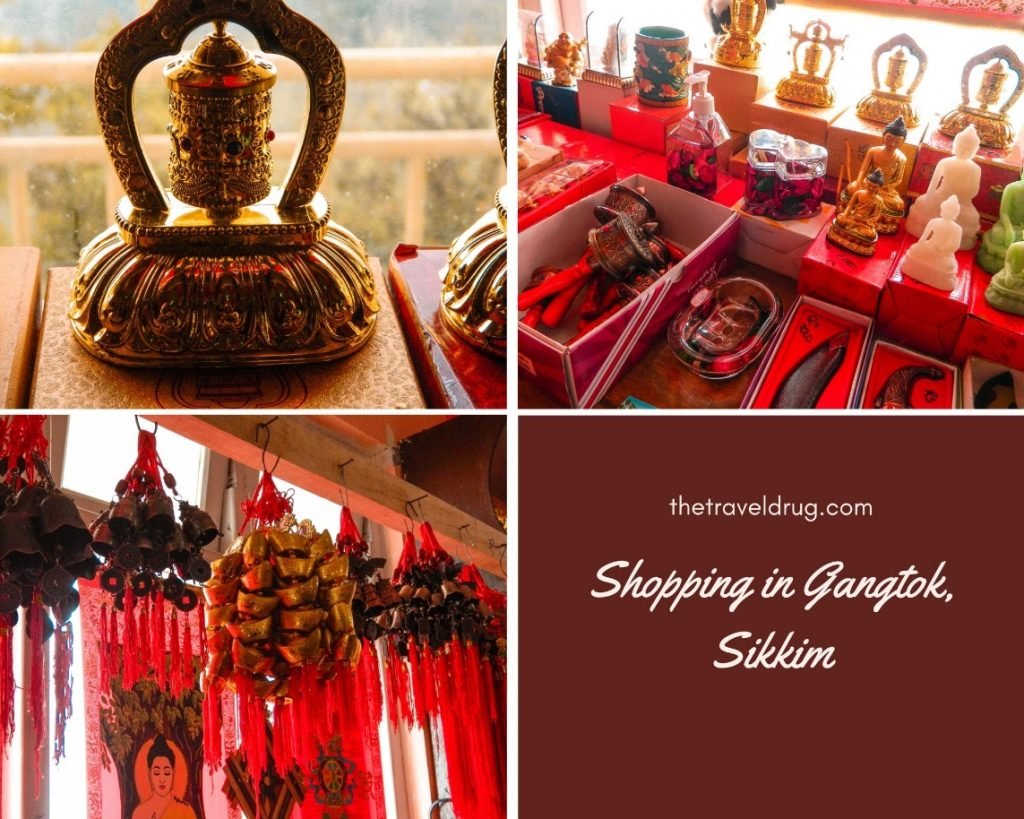 With that, I conclude my travel dairy for two-amazing and fun-filled days in Gangtok, Sikkim. For a more casual experience you can choose to cover Gangtok and locations around it in four to five days but if you’re visiting other towns and are time-bound, two days are more than enough to get the best of Gangtok. Gangtok has a lot to offer and should definitely be considered in your north-east India travel plans.
With that, I conclude my travel dairy for two-amazing and fun-filled days in Gangtok, Sikkim. For a more casual experience you can choose to cover Gangtok and locations around it in four to five days but if you’re visiting other towns and are time-bound, two days are more than enough to get the best of Gangtok. Gangtok has a lot to offer and should definitely be considered in your north-east India travel plans.
Check out this blog post by Pixpa on travel photography featuring how a travel photographer explores different places, people and culture to bring viewer the same experience through photographs.
[Written and narrated by – Mitali Harmalkar (Architect & Urban Designer) / Travel Blogger and Writer at ‘thetraveldrug.com’]


